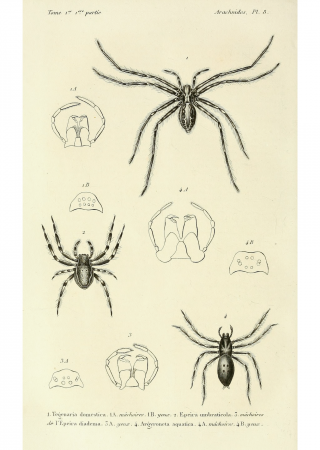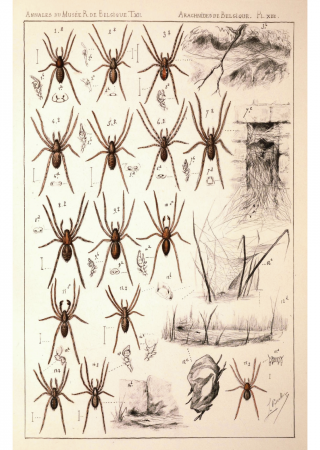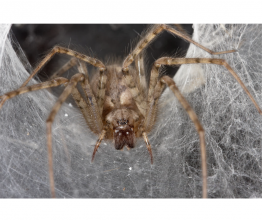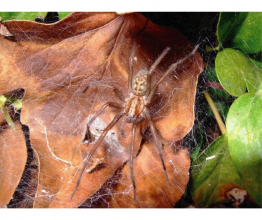House Spider
- …house spiders can survive without food or water for several months?
- …house spiders can often be found trapped in bathtubs, from which they cannot escape due to the tub's slick sides?
- …male house spiders are slightly smaller than females, with longer legs, larger pedipalps and a longer abdomen?
- …house spiders are poisonous, like other spiders, but their chelicerae cannot penetrate human skin?
- …when startled, house spiders run very quickly and change direction, so it is difficult to capture them?
House spiders are very useful spiders, living on flies and other nuisance insects. In corners of rooms or between furniture they build thick flat webs with a small tunnel structure at one end, in which they lie in wait for prey. As soon as something becomes trapped in the web, the spider grabs the victim and drags it into the tunnel, where it is devoured. House spiders are found in human dwellings, but also in dry caves, hollow trees and similar places. The most often seen are males looking for a female to mate with. During mating, the male stays with the female for a lengthy period, and dies after several matings. Subsequently, the male often also serves as a meal for the female. In the fall, females lay up to 50 eggs. House spiders can live up to several years.




